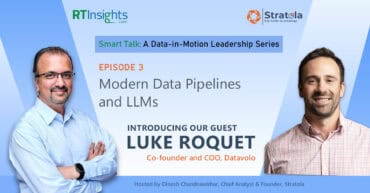
GenAI can be the game changer the telco industry has been needing, but its benefits can only be realized when the technology is incorporated in a secure and controlled manner.
With its ability to create new content and engage in powerful human-like interactions, Generative Artificial Intelligence (GenAI) has the potential to reshape the telecommunications industry. To this end, communications service providers (CSPs) across the globe are forming teams and onboarding the skills needed to apply GenAI technology to their telco business.
According to TM Forum’s GenAI telco survey, 53 percent of respondents say they have already set up a GenAI center, and 59 percent have identified families of use cases, as well as specific use cases within each family. AWS also conducted a survey that found half of the telco respondents plan to adopt GenAI within two years and have the expectation that their spending will increase by as much as six times. With approximately 90 percent of telco data coming from BSS/OSS and knowledge base systems such as billing history, usage data, tariff plans, catalog rules, offers, promotions, inventory data, assurance, and configuration management, telcos face unique challenges in training and ‘fine tuning’ GenAI models.
Given that this data is essential to be able to obtain real value from GenAI, the challenge all CSPs face is how to access the data in a secure and controlled way. This concern was echoed in a recent EY report that provides survey results on the top risks facing telecom companies in 2024. Topping the list was CSPs underestimating changing imperatives in privacy, security, and trust. The report also exposed that cyber-resilience is under pressure, with GenAI forming a question mark to existing data governance strategies, and that 68 percent of telco respondents believe they are not doing enough to manage the unintentional consequences of AI.
See also: GenAI – The Telco Differentiator Poised to Drive Personalised User Experiences
The conundrum in realizing the true value of GenAI
GenAI models, such as Open AI’s GPT-4 that powers ChatGPT, are only as good as the data they are trained on. With over 1.7 trillion parameters of training data, GenAI models have superb communication and content creation skills. But they don’t ‘know’ or ‘understand’ the telecom world, which is highly complex. Obtaining the needed intelligence requires access to the telco’s proprietary BSS/OSS data and knowledge bases – which is at the crux of the challenges telcos face. These obstacles can largely be discussed in four categories: security risks, data fluctuations, GenAI model quality, and costs.
- Security risks: Since the majority of advanced Large Language Models (LLMs) are public, the sensitivity and confidentiality of telco customer and network data makes training them with the needed domain data and knowledge a significant security risk.
- Data fluctuations: A considerable amount of telco data is real time or in a constant state of flux, making it unsuitable for the ‘fine tuning’ techniques used to refine pre-trained models with domain-specific data.
- GenAI model quality: GenAI models are only as accurate as the data they ingest. Since they don’t ‘know’ the telco business and its processes, they may make assumptions that can produce erroneous results.
- GenAI model costs: Creating custom GenAI models, with the quality of ChatGPT, is extremely costly in terms of training and running the models. OpenAI estimates that it costs over $100 million to train GPT-4, and a staggering $700k/day to run it – making the investment unaffordable for many of today’s CSPs.
To overcome these issues, a different – telco-specific – approach is needed.
Infusing models with real-time telco data and knowledge
Tapping into the telco’s BSS/OSS and knowledge base systems is a must to obtain real value from GenAI technology. An effective method to access this domain-specific information is to augment user prompts with additional context – in the form of real-time data and instructions – giving the GenAI model the relevant domain data for highly accurate responses.
This context-prompt enrichment technique leverages technologies, including prompt engineering and retrieval augmented generation (RAG), to obtain real-time BSS/OSS data and provide access to telecom knowledge base systems. Benefits of this approach include:
- Returning high-quality responses by grounding the model with relevant data and instructions. Additionally, this helps to eliminate the issues of ‘hallucinations’ that have appeared in public models.
- Working securely with real-time data through API calls to BSS/OSS systems, ensuring the model has the most current information.
- Accessing up-to-date knowledge base systems to provide details about the telco business – networks, services, business processes, systems, and more.
- Working with any mix of public and custom-built GenAI models.
- Reducing the time to resolve a request and subsequent costs, as the model has more accurate data requiring less ‘too and fro’ with the user.
By combining this enrichment process with model ‘fine tuning’ for more static data, CSPs can unleash their extensive domain knowledge to powerful GenAI models (public or custom on-premise) to create an assortment of valuable use cases.
Establishing high levels of security
Due to vast amounts of customer data, as well as regional laws such as GDPR, the telecom industry has very strict confidentially rules, creating a barrier in using public models or hosting private models in the cloud. While GenAI models need telco data to effectively do its job and resolve queries, the quandary CSPs face is in ensuring that the model never gets access to confidential customer or company data.
Overcoming security risks requires the use of sophisticated anonymization techniques – such as just-in-time anonymization or obfuscation. These methods keep customer data confidential and protects it from exposure to GenAI public models. For instance, a customer’s mobile number, address, or name is substituted with pseudo data before being sent to the GenAI model. When the model returns the response, the real data is reintroduced for communication with the user. This process forms part of a robust security framework, including strict data access control measures that must be put in place across the entire GenAI ecosystem.
Bringing telecom domain expertise to GenAI
Telcos face unique challenges in bringing GenAI to fruition – from fluctuating data and erroneous data sets to costs that can prove to be prohibitive – and need a way to tap into their BSS/OSS and knowledge base systems without risking the confidentiality of the sensitive customer and network data in their possession. This necessitates a new and essential component of the GenAI ecosystem that sits at the intersection between GenAI models, the users, and the proprietary telco data sets.
This capability enables CSPs to extract real-time data as and when needed, enrich models with context-based prompts, ‘fine-tune’ models, and execute sophisticated data sanitization techniques to keep sensitive data secure. This same technique can be used for any public or private GenAI model, allowing CSPs to choose the right mix of GenAI models to maximize ROI.
Realizing the game-changing benefits of GenAI
GenAI has the potential to positively impact the telecom domain by transforming the business from both an internal and external perspective. Developing and deploying powerful use cases such as digital care assistants, sales advisors, business advisors, digital operations technicians, and service design assistants can help solve the domain’s most demanding issues. The benefits of these use cases include lowering call center costs while enhancing customer satisfaction, increasing internal business productivity, and filling automation gaps with automated service designs, configurations, and network/services fixes.
GenAI can be the game changer the telco industry has been needing, but its benefits can only be realized when CSPs incorporate the technology in a secure and controlled manner.






























